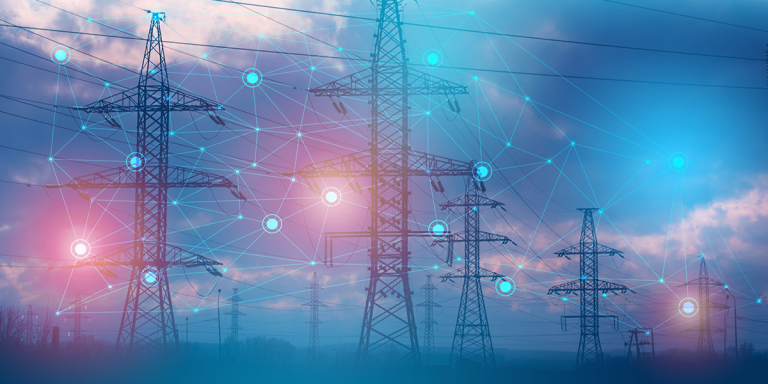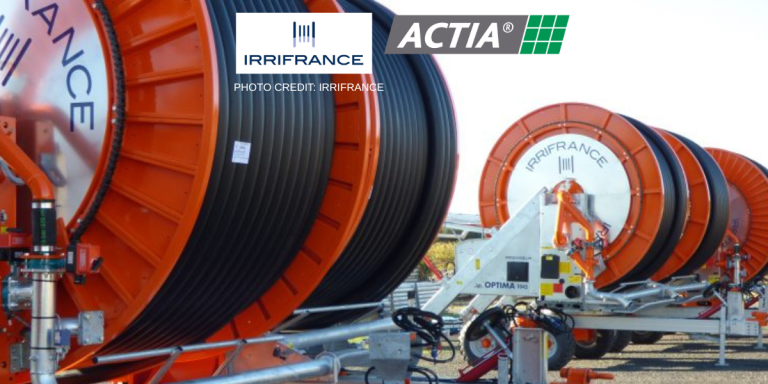ACTIA Telecom’s Energy Division, itself a subsidiary of the ACTIA Group, has been selected by Enedis for the further deployment of its DCCP (Digital Control-Command Protection) project for high voltage substations (known as HTB/HTA, for high voltage A and B). This contract illustrates Enedis’ commitment to ACTIA with regard to the upgrading of more than 80 substations over 4 years.
R&D efforts bear fruit
With more than 40 years of experience in the field of Control-Command of transformation substations, particularly in supervision and automation, ACTIA Telecom made the bold decision to extend its offer to include switchgear and transformer protection solutions.
After 4 years of R&D efforts and validation within its test platforms located on its Puy Ste Réparade site in Provence, the equipment manufacturer convinced the customer by presenting an innovative offer, based on fully modular equipment.
Emphasis was placed on simplifying the configurations, offering more ergonomic solutions and easier maintenance of equipment.
As an extension of its innovations, ACTIA Telecom decided to set up an installation service, to ensure it has full control over the projects entrusted to it by Enedis. Between innovation and the deployment of its services, ACTIA Telecom’s Energy Division aims to become a leading player serving operators in the field of electric power distribution and transmission.
What is an HTB/HTA substation?
An HTB/HTA substation supplies domestic or industrial customers via a succession of lines and transformers that lower the voltage to the “HTA” voltage.It is the intermediate stage between the transmission network and the distribution network. Its role is to lower the electrical voltage before it is delivered to users.
The source substation is an essential part of the overall electrical grid. The transformers lower the electricity from the high voltage HTB (225 kV, 90 kV and 63 kV) to the medium voltage HTA (20 kV). Depending on their size, they can supply thousands of private customers, local councils or businesses. HTB lines, called input lines, can be 63, 90, or 225 kV.
The enclosure of a source substation consists of several buildings including the one that hosts the Input/Output switchgears or circuit breakers, and the one that hosts the control-command. The latter controls the entire substation locally or remotely from a distribution block.
This control is largely automated thanks to the use of smart equipment dedicated to the protection and automation functions. The contract recently awarded by Enedis to ACTIA Telecom covers this equipment, more specifically the digital control-command protections (DCCP). This budget is part of a national programme to secure the Enedis source substations, worth around €400 million.
Optimisation of source substation management is now one of the primary objectives for electricity distribution network operators. The emergence of new needs directly linked to the deployment, among other things, of decentralised production of renewable energies, requires distributors to manage the energy thus produced on medium-sized, highly localised networks.
In France, Enedis has been at the forefront of the advent of new technologies (Smart Grid) and functional upgrades of the PCCN project. Increasing the performance and profitability of HTB/HTA source substations is now one of the top priorities for Enedis and for Local Distribution Companies in France.
Relyance: a range of modular DCCP (Digital Control-Command Protections)
The Relyance solution offered by ACTIA Telecom combines modularity, maintainability and security.
The customised, modular design is adapted to each type of source substation. The decision to “split up” the main functions of a protection solution into several modules, which can be configured and customised as required, gives this solution unparalleled, almost limitless agility.
From a limited set of self-configurable functional modules, it is possible to build equipment items that are vastly different from each other, such as :
- Input/Output protection ;
- a capacitor ;
- coupling ;
- a shunt ;
- a transformer ;
- and several other known functions such as PVH-HTB (zero sequence voltage protection-high voltage B) SAA, compatible Racks, etc.
This modularity limits the number of maintenance workpackages and greatly simplifies configuration operations by making HMI touch screens (like smartphones) available. This user-friendly approach provides an environment conducive to vigilance, making the job of the operations and maintenance engineer easier.
ACTIA keeps control
The historical know-how in the design of Global Systems for ACTIA’s Transport and Electric Power Distribution networks comes into play on three key levels of the remote control chain:
- supervision: Supervisory Control And Data Acquisition (SCADA) systems ;
- telecommunications ;
- control-command.
Electrical networks with increased communicability lead to a more moderate overall consumption and make the delivery of electricity safer and more efficient, whilst being economically viable.
ACTIA Telecom’s skills in telecommunications are a strong asset in this context of ever-increasing volumes of data transfer requiring increasingly effective security measures. ACTIA s offer allows us to respond to the network’s entire technical decision-making chain, from distribution to transmission and distribution substations, making full use of the wide range of telecommunications solutions offered today.
ACTIA Telecom independently manages the installation of the solutions it offers and maintains control of the equipment on site: from delivery to online support. With no need for an intermediary, it assumes full responsibility for operations and supplies, while guaranteeing the best price.
The many satisfied customers of ACTIA Telecom’s Energy Division attest to the sustainability, reliability and scalability of the systems and products the Group offers in France and abroad.






